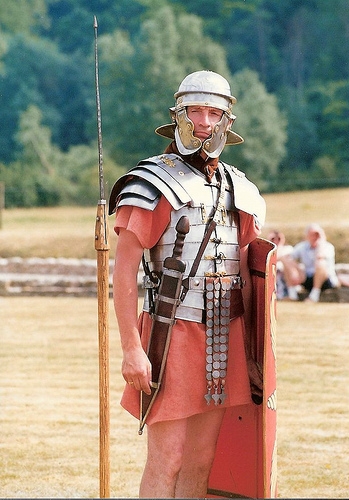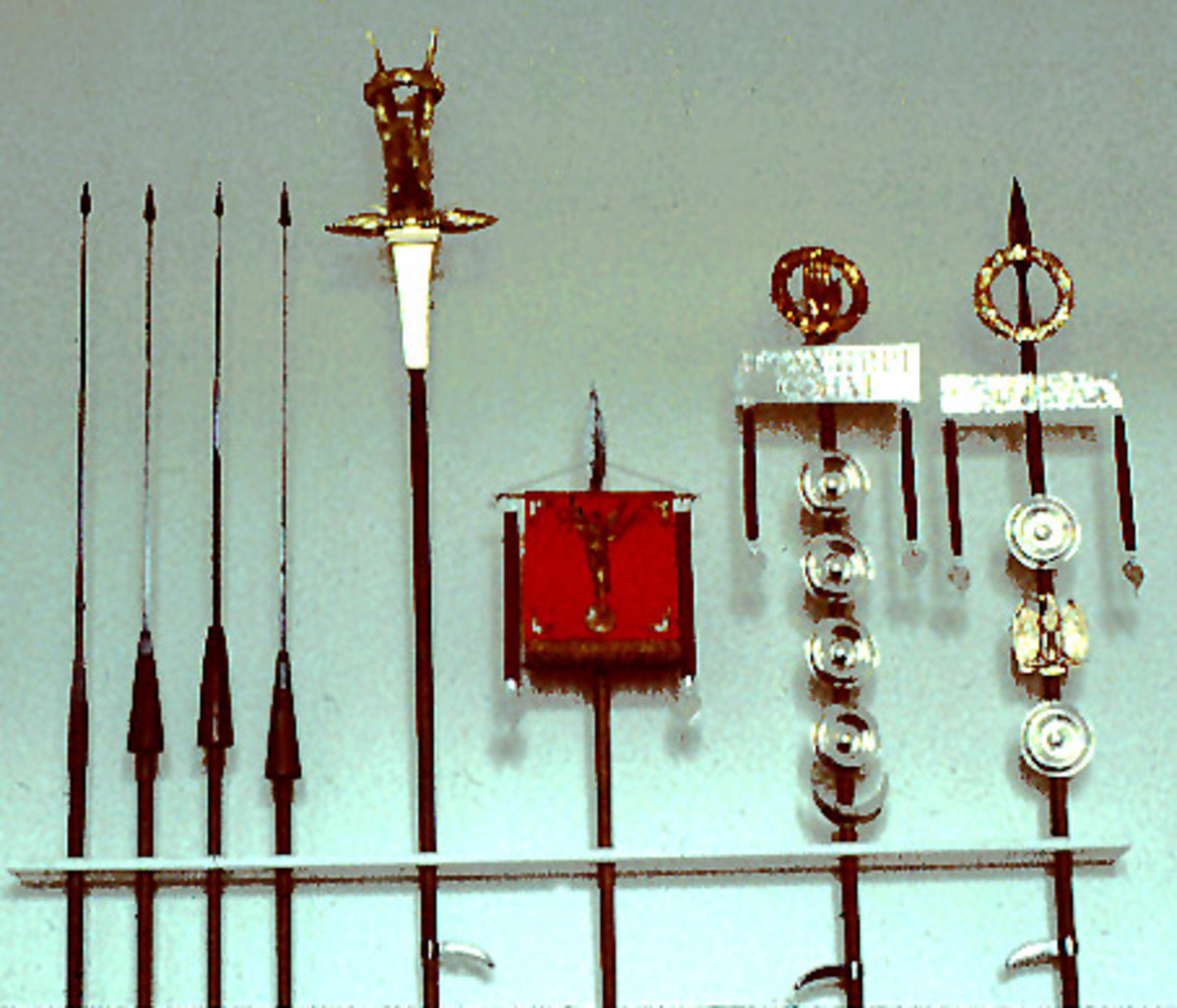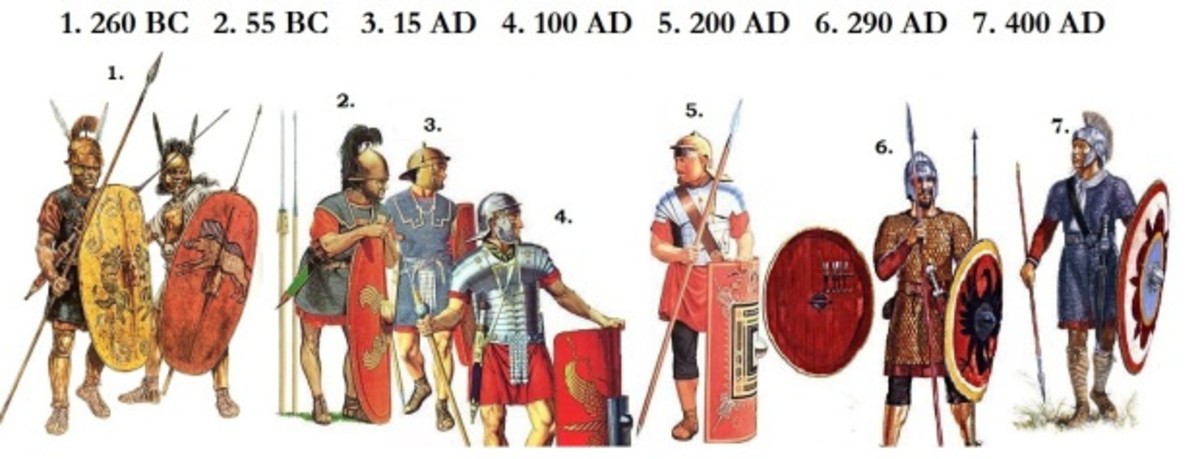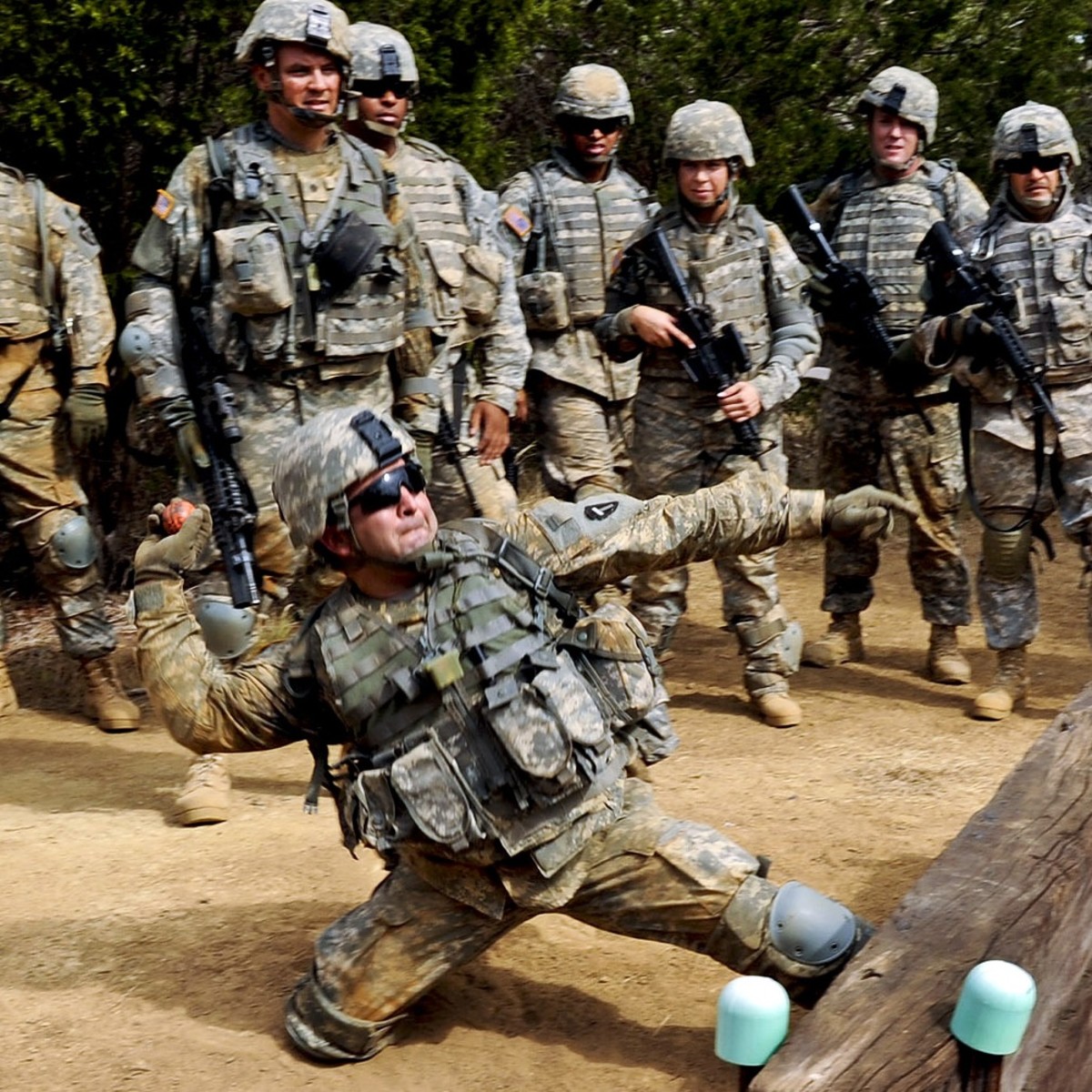Roman military tactics

Roman military tactics
Roman military tactics differ by age (such as the times of the Roman kingdom, republic, empire), by tactics and weapons used, as well as many other factors. On this page, many developments of the Roman military tactics will be explained from a military and social perspective. The knowledge presented is the product of many books as well as a military education of the author.
You will find descriptive texts, pictures and videos of interest below, as well as some books and literature i recommend to anyone interested in learning more.
Image source: wikimedia.org
Development of Roman military tactics
We need to inspect roman equipment and tactics to understand roman battle tactics
Roman military was rightfully considered something to be feared. Although their cruelty to conquered nations and to those they found to be lesser beings (such as non citizens in general), the sheer organizational value of the roman military is something to be praised.
Unlike the german and gaul tribes which had a specific formation and organization based on the ability of the individual warrior (a warrior society that later, after the end of the roman empire emerged as the knights of the middle ages), roman armies surpassed their enemies by not being individually strong but strong as a unit, by prefering defense and discipline over agressiveness.
In the following segments these claims will be shared more extensively, but before we move on i would like to give you an important scoop about the development of military tactics in general.
Military tactics are quite closely connected with the development of armaments, weapons.
They are usually studied together because a change in weaponry can dictate different tactics and vice versa! A change in tactics will require different weaponry.
Let us take a look at the gladius, the typical roman short sword. Its innovation was mostly the slashing, chopping style of combat.
Now imagine, how a legionary felt when he encountered a phalanx, something that you can not beat face on with a short sword (for example, macedonian heavy infantry carried an especially long weapon called a sarissae, which had to be assembled at the spot).
A call in tactics was in order. The way romans beat phalanxes for example, was to outmaneuvre them. The use of a weapon and tactics of the enemy in this case dictated the use of different tactics by the romans.
Such combinations become more obvious with the study of weapon development (weapons and counter weapons for example, try to surpass eachother all the time). This is why, in the following segments we will cover both the roman weaponry and romar military tactics. Only those two, put together, can show you how and why the tactics were developed in such ways.
A roman soldier - The standard and quality protection of the roman soldier

The regular soldier of the roman army, probably a Hastati, armed with a gladius and pilum. He is wearing the lorica segmentata.
Image source: flickr.com
Roman soldier armament
Second part of the roman military tactics equation
Weapons of the romans:
Roman soldiers, especially in the later stages of the roman state, were equiped with the well known gladius. Gladius is basically a short sword, designed not for stabbing like most daggers used by the hoplite armies predominant in citizen armies (such as the hoplites of Greece), but for slashing, chopping motions with which a soldier became very mobile.
The other, well known weapon of the roman army was the pilum. The pilum became famous for being a one use only javelin. Romans, as we claimed before, were defensively orientated in the sense of using many contraptions (such as the balistae, onagers, archer auxilias) to weaken the enemy lines before the meele battle ensued. The pilum was a one use weapon because or the design which ensured the tip broke off. The opponent therefore could not simply pick up the javelin and throw it back, which was the case with the ordinary javelin. Entertaining sure, but being killed with your own javelin was not a legionaries favorite past time.
Other important weaponry of the roman army included a dagger, a spear called hasta, other types of javelins, bows, cavalry swords (longer than the gladius for use off the horseback).
Armor of the roman soldier:
Roman soldiers could be considered heavy infantry of the ancient times. Although not as immobile as a hoplite in a phalanx, the roman soldier still wore quite a bit of armor. The armor shape and use was shaped by battles where the armor of the legionary was put to the test. It is there where the many flaws were seen.
For example, clashes with the ferocious tribes on the balkans dictated protection against two handed weapons such as the falacta, which could cut a legionary in half.
Through time the lorica segmentata, the first and most commonly used armor was replaced by the scale armor we associate with the Byzantine empire (and many eastern empires as well).
We should also note the use of chain armors by certain lighter troops such as auxilia (auxilia is in general, a term for support troops, those not granted the citizen rights, therefore not legionaries).
Roman military tactics
Roman battle tactics explained
Before 315 B.C. the roman army was not impressive at all. With up to four thousand men it could hardly compete with the native powerhouses of Italy. It was divided into centuries (100 soldiers). The model and warfare type closely resembles that of the hoplites, where the richest few rode horses (some even mention chariots, which would be likely, since Greeks were also known to use them, remember Homers Illiade where Achilles fights Hector).
The upper and middle class served as infantry, light infantry (javelins, slings and no armor) was reserved for the poorest which could not afford other weapons and protection, meaning they acted as skirmishers and were especially useful for chasing enemies when they fled.
Participation in the army was compulsory, although it was seen as an honorable affair, which most undertook with pride. Such is the general fighting spirit of all citizen armies (again, correlation with Greece is appropriate).
Before 107 B.C. a different model of warfare was established. To allow better tactical management (maneuvre), the legionaries (at the time the legion was about 5000 strong) were assigned into maniples (120 men).
Three lines were formed, the first were the youngest, hastati, armed with gladiuses, javelins. The second line was that of the principes who were similarly armed, with lighter armor. Last and the most veteran were the triarii, who carried pikes instead of the pillum. A typical legion of that time consisted of 1.200 of heach hastati and principes and about 600 of triarii. That made the infantry numbers around 3.000. The other units were again the richest, horsemen (around 300 per legion), 1.200 velites (the poorest, acting as skirmishers).
A legion also usually had allies who served as cavalry or light infantry, but the main infantry, were the legionaries.
Around the second century B.C.because of the immense losses of soldiers poorer classes began to serve as legionaries (those that before took the role of velites). That meant they had to be equiped by the roman state itself, since they could not afford their own equipment. Standardised equipment for the legionary troops began to appear.
A roman military documentary - Part one of the video on roman military tactics
The documentary below comes in three parts and will help you find out some useful information in a fun and descriptive way. Enjoy!
The documentary continues - Second part of the documentary
Final part of the documentary - Third and last part of the documentary on roman battle tactics
The best military history book - A must have for any military historian or enthusiast
This book focuses on many aspects of warfare and will give you the foundation you need to understand the roman military tactics.
A book on Roman battle tactics - An in depth look of the roman military tactics
This book will ensure your knowledge of roman warfare is top notch.
Search for more resources online - See roman battle tactics explained in other books found online
You can find some great books on Amazon, which will help you become a true military historian.










